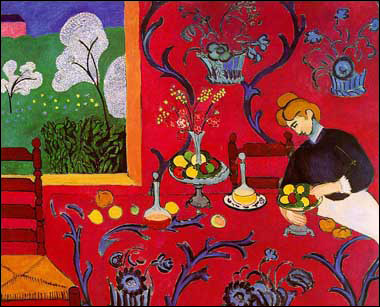
Red is one of three primary colors along with yellow and blue. It’s the complementary color of green and sits opposite to it on the traditional artists color wheel.
The psychological meaning of red:
Red has always been symbolic of blood and life. The universal color of blood binds us all together, giving us a common point of empathy for anyone that’s hurting.
Perhaps because of that connection to pain, the color red is also used as a warning. As the most intense and easily seen color, our eyes and minds quickly become trained to understand that red means STOP—making us think before proceeding.
And, since red is such an intense, hot color, it’s often used to show passion. Emotions like anger, love, or shame can all lead to a rising inner temperature and a quickly beating heart, leaving us red with anger, burning with love, or scarlet with shame.
All of that combines to make red—by far—the most emotionally charged color of the entire color spectrum.
Is red a “girl color” or “boy color?”
Red is technically neither, but it’s probably worn more by females than males. Really, red is such a powerful, eye-catching color that both genders are attracted to it; and although women may wear red more often than men, it doesn’t necessarily say “feminine” as much as it says “confidence.”
Red in society:
The obvious use of the color red is in traffic lights and stop signs, because of its high visibility and inherent implication of danger.
What you might not realize is that the predominance of the color red in many restaurants is there only to make customers hungry, and to encourage them to order more than they normally would. Red walls and décor also cause people eat faster, since the color increases our normal levels of energy.
Another classic example of red commercialism is seen in sports cars. A Dodge Viper, for example, looks even faster and more heart-poundingly exciting when it’s red. Those same emotions surface all the time, from seeing the quick flash and flourish of a matador’s cape to noticing a woman’s intense red lipstick.
Red’s natural physiological effects make it the go-to color for grabbing attention. When something needs to be seen, it’s red.
Pigments that make up red paint:
Some of the most common red pigments in oil paints are Cadmium, Anthraquinone, and Quinacridone. Other red paints use Napthol, Perelene, or natural earth pigments like Iron Oxide.
Common red oil paints:
Most artists probably use at least one of the Cadmium Reds (there’s also Cadmium Red Light and Cadmium Red Deep) and many of us probably have several additional reds as well.
Popular choices are Permanent Alizarin Crimson, Napthol Red, Quinacridone Red, Vermillion and Venetian Red.
Famous red paintings:
Pure red shows up most often in paintings as an accent color to draw the eye, like in Oath of the Horatii, a painting by Jacques-Louis David, which I showed just a small section of at the beginning of this article.
There are always exceptions, however, as you saw in the second painting, Henri Matisse’s Harmony in Red.
But much more fittingly, I think, was Edvard Munch’s deliberately use of intense reds to enhance the raw emotion and terror in his famous painting, The Scream.
This post may contain affiliate links.


